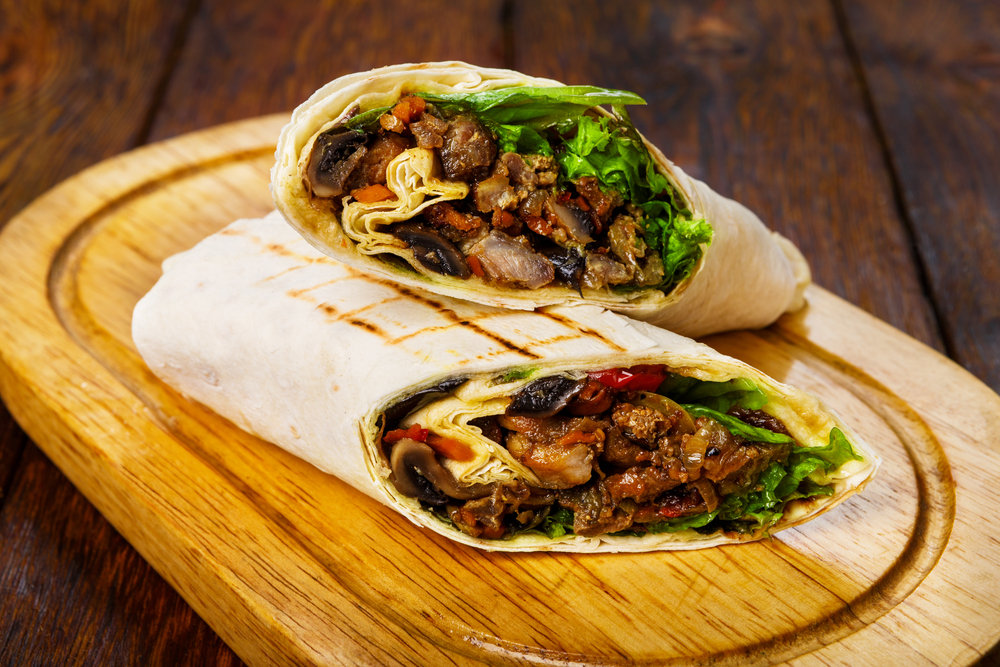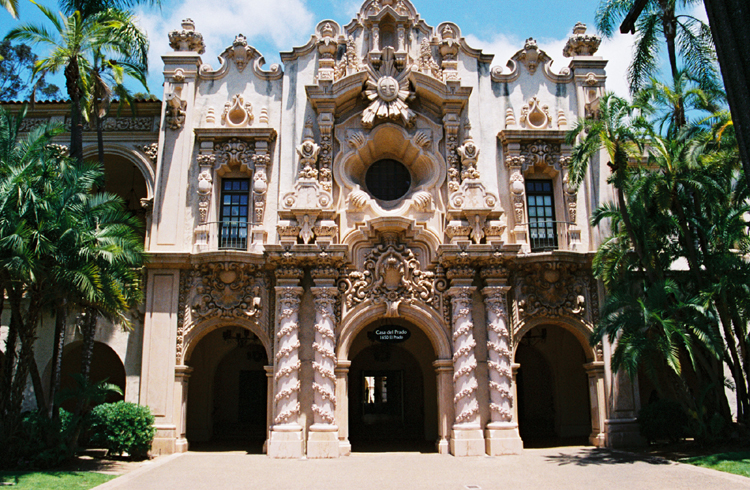We all know that San Diego is famous for its stunning beaches and amazing weather, but the city is also impressive for many other things! Before studying English at CISL in San Diego, check out these 10 fascinating facts about SD. They give you a fun look at what makes America’s Finest City so great!
1o Fascinating Facts about SD
#1: San Diego produces more avocados than anywhere in the U.S.
Maybe this is why we put avocado on everything? Especially burritos! Make sure you have the city’s famous California Burrito while visiting: read about California’s burrito culture before chowing down!

#2: Former U.S. President Ronald Reagan was the first person to drive across the Coronado Bridge when it opened in 1969.
Today, the bridge is a famous landmark and the entryway to beautiful Coronado . . . although you can also take the Coronado Ferry from the Embarcadero for a more fun way to arrive on Coronado Island!
#3: San Diego has over 7,000 farms (more than any other city in the United States).
Maybe that is why our farmer’s markets are so great! CISL San Diego students who live in Little Italy are just one street away from the incredible Little Italy Farmer’s Market; students can also visit the Hillcrest Market on Sundays and the Ocean Beach Market on Wednesday evenings.
#4: San Diego’s Embarcadero is home to the Star of India, the world’s oldest sailing ship.
The ship was built in 1863 and still is an active sailing ship! Visitors can check it out (and even ride on it)!
#5: It’s against the law to swim in any of the lakes in San Diego.
But they’re still worth a visit: the lakes are beautiful and you can still kayak, canoe, and fish. Check out our Guide to San Diego Lakes for more information.

#6: The Hotel Del Coronado is the country’s largest wooden structure.
It also was home to the first electric-lit outdoor Christmas tree in 1904. These days, it’s located on the #1 Beach in the U.S. and the hotel is still a popular Christmas destination thanks to its outdoor (beachside!) ice skating rink.
#7: San Diego was known as the Tuna Capital of the World from the early 1930s through the late 1970s.
Many of the fishermen were Italian, and their charming homes can still be seen in Little Italy, which is now one of the trendiest neighborhoods in the United States.

#8: San Diego was home to famous children’s author, Dr. Seuss.
His real name was Ted Geisel. Would you like to read more in English? Check out our Guide to Novels in English for some suggestions.
#9: The San Diego Zoo is a large part of the Will Ferrell movie “Anchorman: The Legend Of Ron Burgundy.”
However, the scenes were actually filmed at the old Los Angeles Zoo, not at the San Diego Zoo. Check out our list of Movies Set in California for some more famous locations on the big screen!
#10: San Diego’s Museum of Man (in Balboa Park) houses one of the most important collections of Ancient Egyptian antiques in the country.
The museum has real mummies and seven painted wooden coffins! One of the coffins, the Ptolemaic child’s coffin, is one of only six in the world. Balboa Park is an excellent place to explore: read our Insider’s Guide to Balboa Park for some ideas.
To read the full list of San Diego facts, visit Movoto.
Relative Clauses: Omitting “THAT”
Each of the above facts can be rephrased as a question in order to ask someone if they know a fact.
Did you know . . .
- that San Diego produces more avocados than anywhere in the U.S.?
- that Former U.S. President Ronald Reagan was the first person to drive across the Coronado Bridge when it opened in 1969?
- that San Diego has over 7,000 farms?
- that San Diego’s Embarcadero is home to the Star of India, the world’s oldest sailing ship?
- that it’s against the law to swim in any of the lakes in San Diego?
- that he Hotel Del Coronado is the country’s largest wooden structure?
- that San Diego was known as the Tuna Capital of the World from the early 1930s through the late 1970s?
- that San Diego was home to famous children’s author, Dr. Seuss?
- that the San Diego Zoo is a large part of the Will Ferrell movie “Anchorman: The Legend Of Ron Burgundy?”
- that San Diego’s Museum of Man (in Balboa Park) houses one of the most important collections of Ancient Egyptian antiques in the country?
Each of these sentences has the word “that.” However, this word can also be omitted and each sentence will still be grammatically correct.
Did you know . . .
- San Diego produces more avocados than anywhere in the U.S.?
- Former U.S. President Ronald Reagan was the first person to drive across the Coronado Bridge when it opened in 1969?
- San Diego has over 7,000 farms?
- San Diego’s Embarcadero is home to the Star of India, the world’s oldest sailing ship?
- it’s against the law to swim in any of the lakes in San Diego?
- the Hotel Del Coronado is the country’s largest wooden structure?
- San Diego was known as the Tuna Capital of the World from the early 1930s through the late 1970s?
- San Diego was home to famous children’s author, Dr. Seuss?
- the San Diego Zoo is a large part of the Will Ferrell movie “Anchorman: The Legend Of Ron Burgundy?”
- San Diego’s Museum of Man (in Balboa Park) houses one of the most important collections of Ancient Egyptian antiques in the country?
Why is this? THAT in these sentences is not necessary. Let’s see why.
These sentences have two parts. The main clause and the relative clause.
- Did you know + that + subject + verb
- Did you know + subject + verb
The main clause (“did you know”) is the main part of the sentence. It has a subject (you) and a verb (know). All clauses have a subject and a verb.
These relative clauses begin with a relative pronoun (“that”) and include a subject and a verb. (Relative clauses can also start with other words, such as “who” or “which,” but we are only focuses on relative clauses with “that.”) The relative clause works in relation to the main clause. In this case, the relative clause is the thing we are asking if the other person knows.
Why can we remove the word THAT from these sentences? Because the relative clause already has a subject and a verb.
- Did you know San Diego produces more avocados than anywhere in the U.S.?
(“San Diego” is the subject and “produces” is the object.)
There are times when we cannot omit the relative clause (“that”). This happens when the word “that” is the subject.
- Did you know that man who said hello to you?
- Do you want that piece of cake?
- Does she need that set of keys?
As you can see, these questions are different: they are not asking a person if they know pieces of information or facts.
What did we learn? We learned (that) we can omit the word “that” from questions about facts or information. And, as you can see from the last sentence, we also learned (that) we can remove the word “that” when reporting about things we learned!
For more information on relative clauses, check out some of our article on Defining and Non-Defining Relative Clauses.
